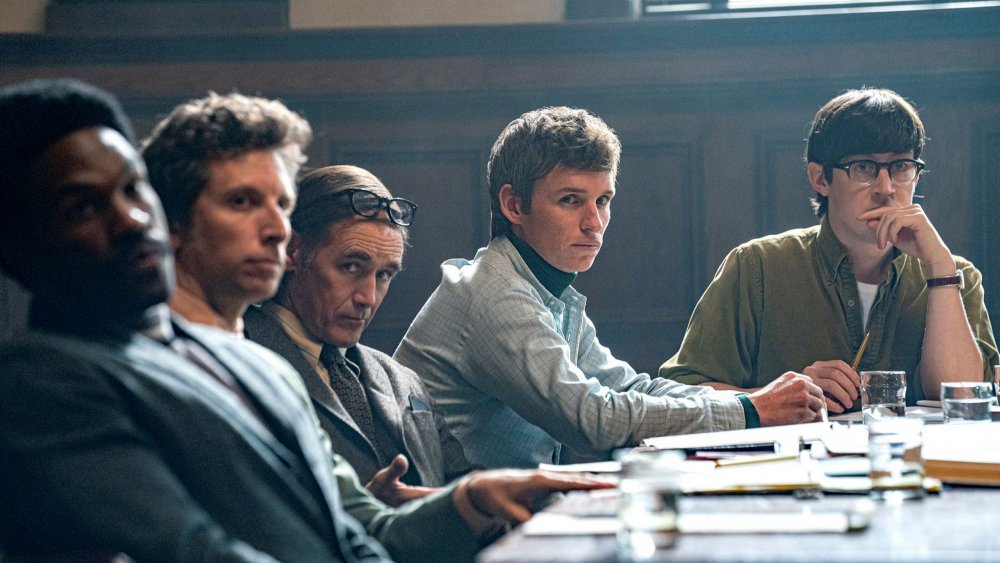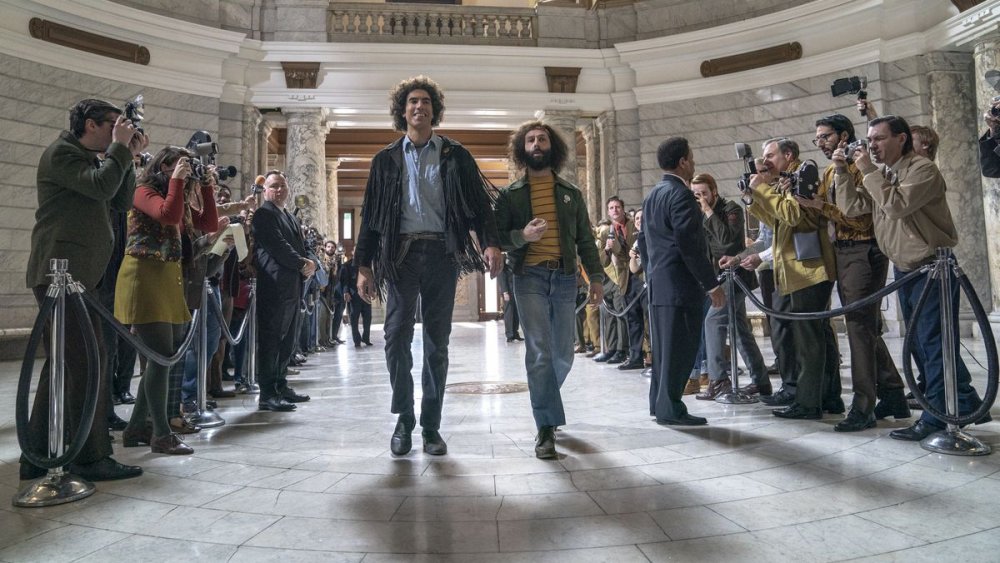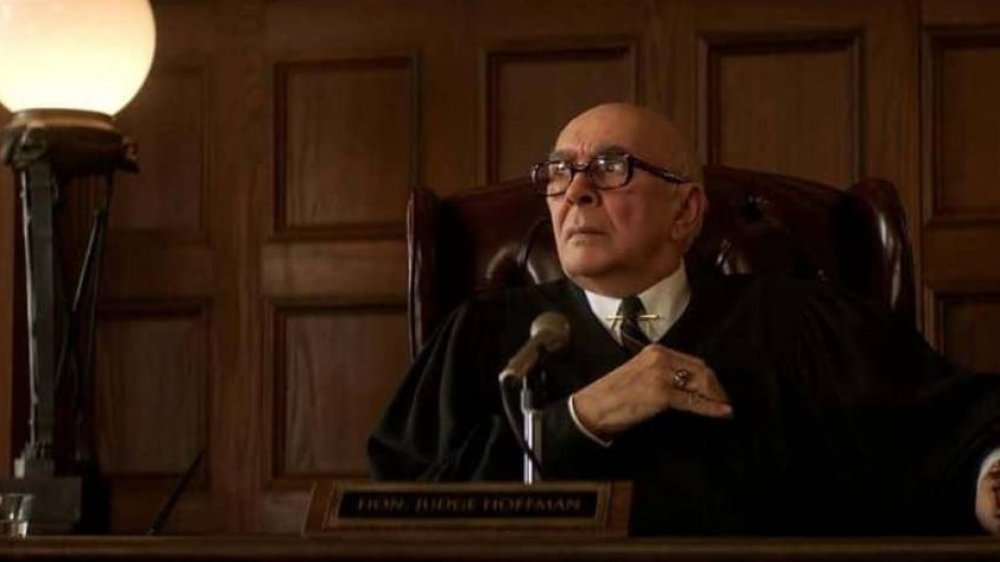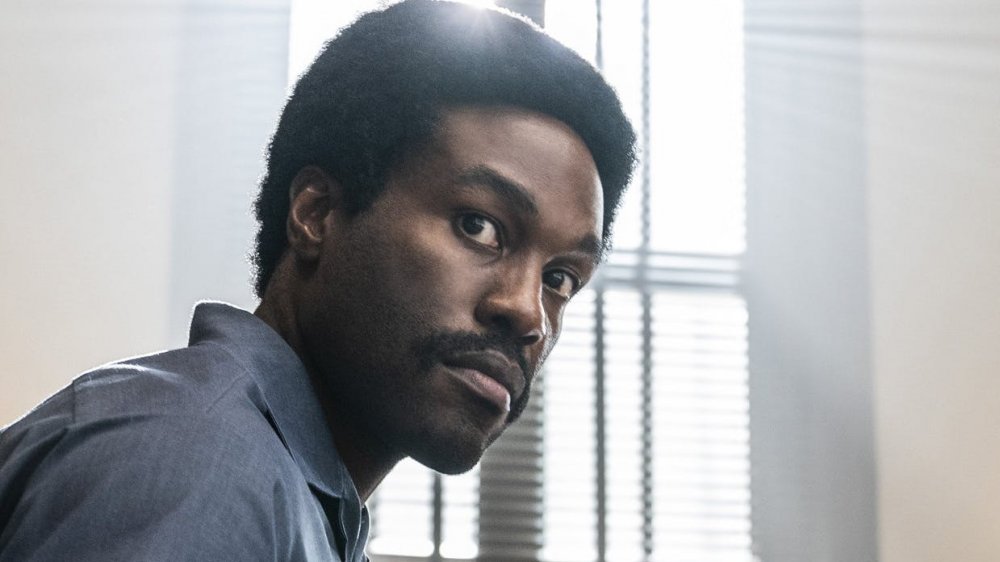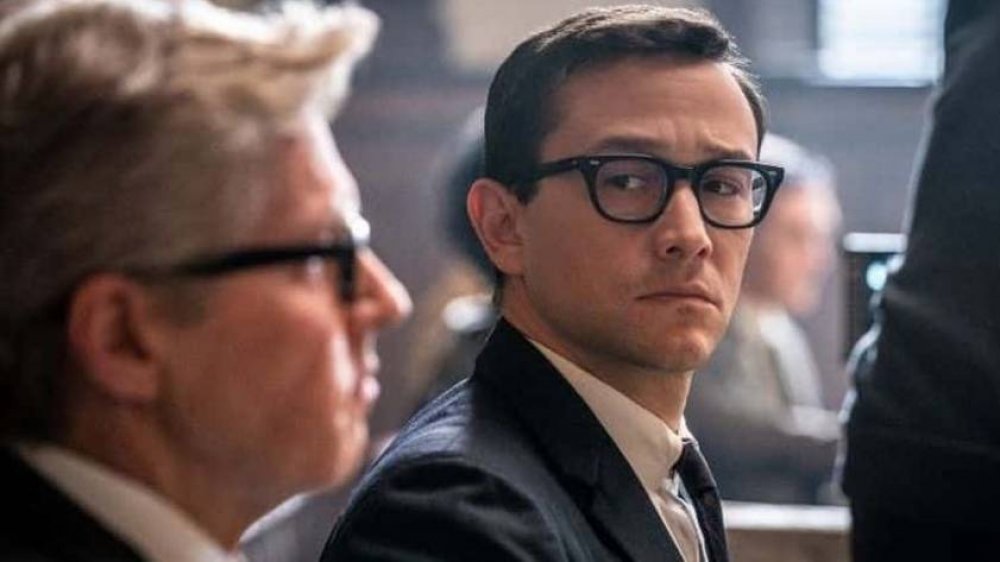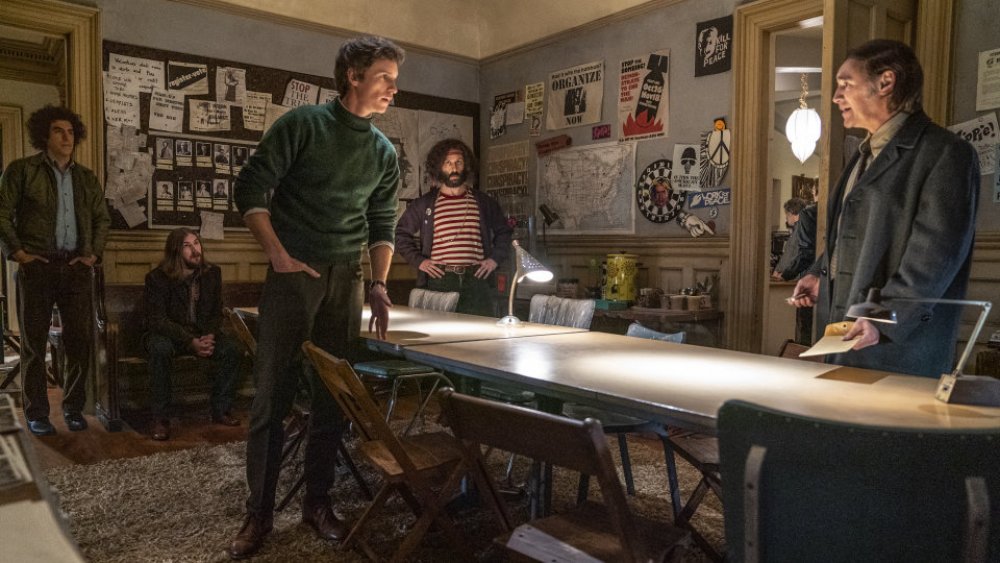How Accurate Is Netflix's The Trial Of The Chicago 7?
Aaron Sorkin isn't afraid of movies and TV shows that will ruffle some features. He created the hit NBC series The West Wing, which provided glimpses into the Oval Office. In recent years, he's turned his attention to larger-than-life figures like Steve Jobs and Mark Zuckerberg, who have fundamentally changed the way we live in this world. Sorkin made his directorial debut with the 2017 film Molly's Game, and now he's back in the director's chair on The Trial of the Chicago 7, which he also wrote, and which is now available for viewing on Netflix.
The movie follows a group of protestors against the Vietnam War known as the Chicago 7. They end up getting charged with conspiracy and crossing state lines with the intention of starting riots at the 1968 Democratic National Convention, which led to an all-out brawl between protestors and police officers. The film has some very clear parallels to the modern political climate in which the police's role in protests continues to be questioned.
The Trial of the Chicago 7 stars Sacha Baron Cohen as Abbie Hoffman, Yahya Abdul-Mateen II as Bobby Seale, Joseph Gordon-Levitt as Richard Schultz, Eddie Redmayne as Tom Hayden, Mark Rylance as William Kunstler, Michael Keaton as Ramsey Clark, John Carroll Lynch as David Dellinger, and Frank Langella as Judge Julius Hoffman. The film has been in development for years with the idea originating when Aaron Sorkin met with Steven Spielberg, who insisted Sorkin do something about the riots at the 1968 DNC (via USA Today).
While the film is based on a true story, and much of what transpires on screen actually happened, there are plenty of details that have been heightened or made up entirely for the sake of dramatization. It's common for this to happen to make for a more cohesive narrative — even in Sorkin's other film, Molly's Game, certain details were left out or exaggerated to help move the plot along.
We've read through various sources to determine what actually happened during this trial, focusing on some of the more outlandish moments that may make people scratch their heads and wonder if it's true. After you watch the film, there are plenty of resources to learn more about what really happened with the Chicago 7 during the trial and after.
Did Abbie and Jerry really wear robes during the trial?
The answer: Yes.
One of the funniest moments in the film comes when Abbie Hoffman and Jerry Rubin (Jeremy Strong) arrive at the courtroom wearing judicial robes. Judge Hoffman was a true stickler in the courtroom, demanding respect and courtesy at all times. This went in direct contrast to the sensibilities of Abbie Hoffman, who was a well-known rabble-rouser. Over the course of the trial, he and Rubin did all kinds of things to get the judge worked up. He would refer to the judge as "Julie" and read poetry out loud in the courtroom. In one instance, the duo even wore judicial robes just to agitate Judge Hoffman (via Esquire).
The men's plan worked like clockwork. Judge Hoffman demanded the men remove their robes. They complied, and underneath the robes, they revealed they were wearing police officer uniforms. Abbie Hoffman engaged in plenty of other disruptions that didn't even make it into the film, at one point even performing a headstand on the table (via Slate). Abbie Hoffman wasn't afraid of authority, and that sensibility shines through in the film.
Was Judge Hoffman really that forgetful and irate?
The answer: Yes.
Frank Langella plays the pivotal role of Judge Julius Hoffman in the film. He's often portrayed as forgetful, as implied by a running gag in which he can't remember people's names. This was based on what the actual judge did, and a common victim of this forgetfulness was Leonard Weinglass, to whom the judge would refer as "Weinruss" and "Feinglass." Forgetfulness, however, was just the beginning of why the defendants didn't like the judge.
In a 1974 book titled The Benchwarmers, Judge Hoffman is described as being "impetuous and rude." He had a reputation for being cranky and belligerent according to these sources. Not only that, but court records indicate that Judge Hoffman would criticize the Chicago 7 for their posture, and he even asked the court to dismiss evidence that could've been used to help the defendants. When all was said and done, he issued a total of 175 counts of contempt of court (via TIME Magazine).
Did the judge bind and gag Bobby Seale in the courtroom?
The answer: Yes, but the reality goes so much further.
After the murder of a fellow Black Panther member, Bobby Seale has an outburst in the courtroom. The judge tells the guards to take him into another room, and when he's brought back out, he's bound and gagged. This actually happened during the trial, as related in Jon Weiner's book Conspiracy in the Streets (via TIME Magazine). The quote goes as follows: "As shocking as the chains and gag were, even more unbelievable was the attempt to return the courtroom for normalcy."
In the film, Schultz immediately approaches the bench to ask for a mistrial. The judge relents and calls for a mistrial on behalf of Seale before adjourning for the day. In actuality, Seale remained bound and gagged for three days. While the film gives more expediency to these events, they did actually happen, and Seale's trial was eventually deemed a mistrial. Later, he would be convicted of his 16 counts of contempt of court, which Judge Hoffman was prone to issuing. Seale's charges for this case would later be dismissed.
Was Richard Schultz really sympathetic to the Chicago 7?
The answer: Not at all.
Joseph Gordon-Levitt portrays attorney Richard Schultz, a junior prosecutor working on behalf of the United States government. Throughout the film, there are moments in which he appears sympathetic to the Chicago 7. When he's first hired for the case, he even voices some objections to trying these individuals for expressing their freedom of speech, believing there could be wide-ranging consequences to a conviction. When Bobby Seale is bound and gagged, Schultz approaches Judge Hoffman first to ask for a mistrial. In actuality, Schultz was anything but sympathetic (via CNET).
It would appear as though Aaron Sorkin tried to make Schultz come across as more idealistic in the film than he actually was (via Slate). There are no indications from court records that Schultz was in any way understanding of the defendants, and he didn't have any reservations about taking on the case in the first place.
Did Tom Hayden really read the names of those who died in the Vietnam War?
The answer: Yes, kind of.
In the movie's finale, Tom Hayden rebukes the judge's idea that he can get a lighter sentence if he displays remorse. Instead of doing that, he reads the names of Vietnam War soldiers who died over the course of the trial. It's a payoff to what we see earlier in the film, when his compatriots begin writing down the names of soldiers after viewing a report on TV. In a riveting moment, Hayden begins listing those names right before the judge hands down a conviction.
There was a moment in the actual trial when Tom Hayden did precisely this, but it occurred earlier during the trial, not toward the end (via TIME Magazine). In fact, he did it on October 15th, 1969 (Vietnam Moratorium Day). While Tom did get to read off several soldiers' names, the judge cut him off before he could get too far. Remember, Judge Hoffman wasn't the type of person to just let someone ramble off like that. It does, however, make for a stirring filmic finale.
The film stays largely true to the real events. While some dramatic flourishes are added, the movie predominantly sticks to the court records to show how issues from the 1960s still affect modern American society. The Trial of the Chicago 7 is now available to watch on Netflix.
